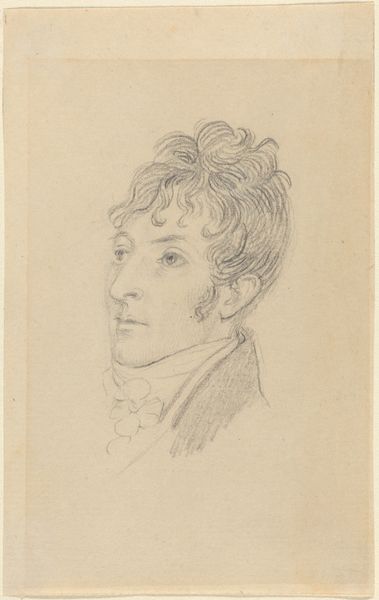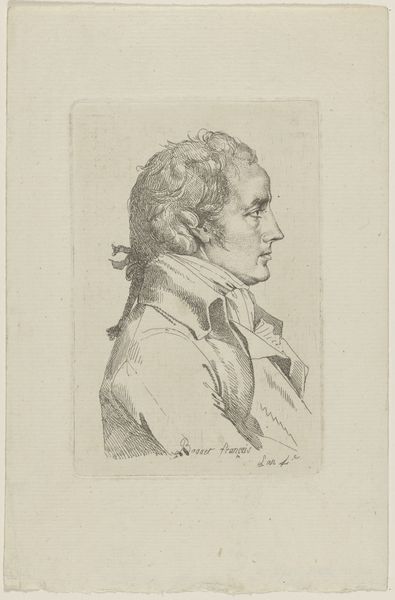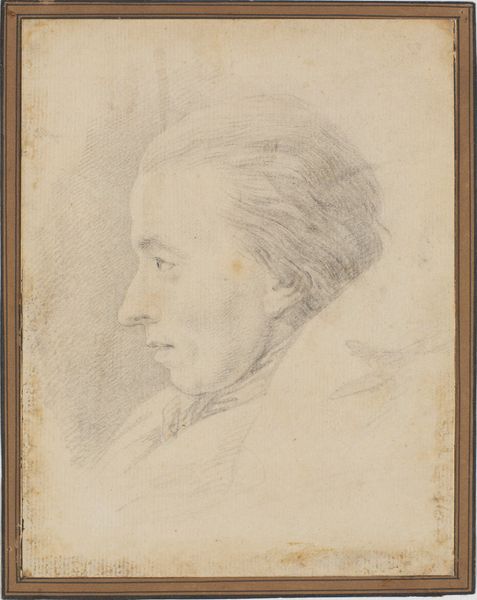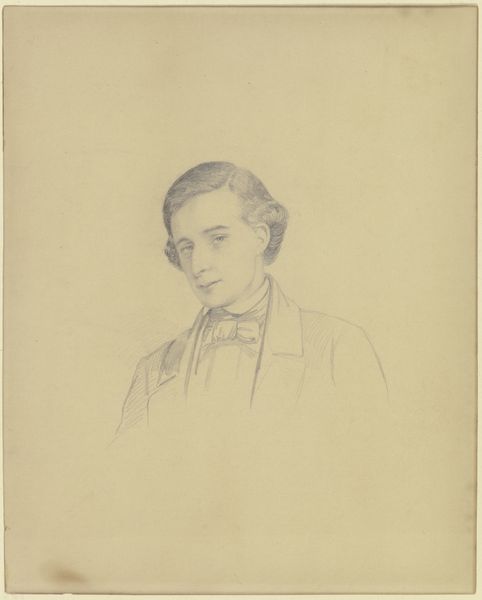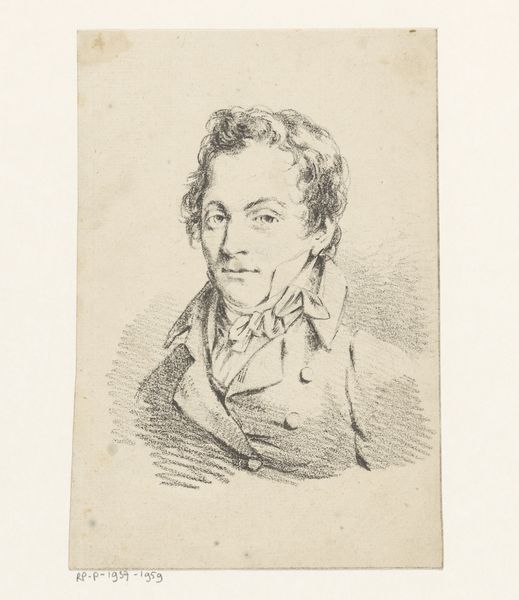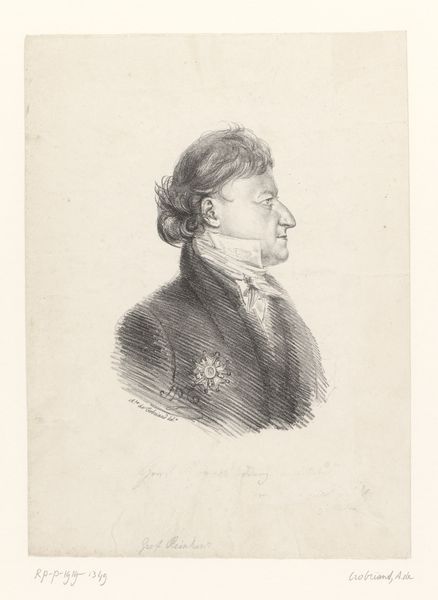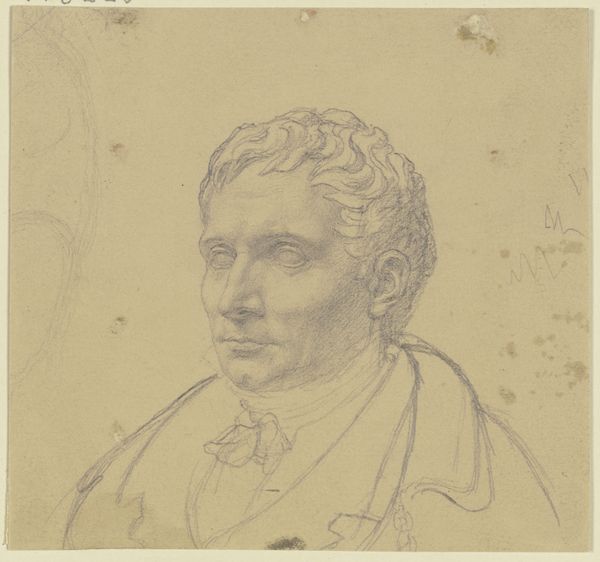
drawing, print, etching, pencil
#
portrait
#
drawing
# print
#
etching
#
pencil drawing
#
pencil
#
portrait drawing
#
realism
Dimensions: 140 mm (height) x 105 mm (width) (bladmaal), 124 mm (height) x 85 mm (width) (plademaal)
Editor: So, this is Carl Bloch's "Portrait of Emil Bloch," an etching from 1868. It's strikingly simple, almost minimalist. It’s a very direct, no-frills portrayal. What stands out to you, looking at this portrait from a historical perspective? Curator: What immediately strikes me is how this intimate portrait, seemingly devoid of the grand narratives often associated with 19th-century portraiture, operates within a specific artistic and social landscape. The burgeoning Realist movement sought to democratize representation, turning away from idealized depictions of the elite and toward more grounded, everyday subjects. Editor: That makes sense, given the detail in his face. It really emphasizes the subject's humanity. Curator: Exactly. This isn't just a face; it's an individual, a person with a story. Consider the role of art institutions at the time, museums in particular. They were becoming increasingly accessible to the public, and artists were responding by creating works that resonated with a broader audience. How do you think this particular portrait fits into that context? Editor: I imagine it offered viewers a relatable figure, unlike the typical aristocratic subjects of older art. A piece like this seems like it could have fostered a sense of connection with the art world for the everyday person. Curator: Precisely! It’s also fascinating to consider how the proliferation of prints and etchings, like this one, made art more accessible and affordable, contributing to a visual culture that extended beyond the wealthy elite. Bloch’s choice of medium speaks volumes about the changing dynamics of art consumption and distribution. What do you make of that? Editor: It seems like the artwork is accessible due to the medium of printing used to make it and how society could connect with art in a more relatable and familiar way. Curator: And with the art world becoming more connected with relatable imagery, viewers are more connected to the meaning. It definitely has a more accessible aura to it. It’s refreshing to examine a portrait divorced from grandstanding and fully embracing that simple connection. Editor: I never considered the socio-political forces at play when portraiture changed from the ideal elites of the upper class to portraits representing realism. This etching certainly brings a deeper significance of realism to me!
Comments
No comments
Be the first to comment and join the conversation on the ultimate creative platform.


